
Adsorber. What is it in the car, what is it for, what it affects and what are the main symptoms of a malfunction
Content
- What is an adsorber and EVAP system
- Components
- Why do you need an adsorber?
- Where is the adsorber
- The principle of operation of an adsorber in a car: the EVAP system
- What does the adsorber valve affect?
- Adsorber device
- Classification of adsorbers
- Gravity Adsorber Valve
- Adsorber valve
- Symptoms of a malfunctioning adsorber
- How to identify malfunctions of the adsorber valve
- Do-it-yourself adsorber cleaning, checking the adsorber valve and adjusting it
- Is it possible to remove
- The consequences of dismantling the adsorber
- We put a new adsorber valve
- Related videos
- Questions and answers:
The modern automotive industry offers the world of car enthusiasts a wide variety of vehicles to meet any transportation challenge. Moreover, cars differ from each other not only in appearance. Every motorist has his own idea of what the best car should be. And most often it is the technical part of the transport that is of key importance.
Under the hood, a modern car gets an internal combustion engine powered by gasoline or diesel. With increasing environmental standards, manufacturers are not only making powertrains with cleaner exhaust emissions, but they are also developing different options for electric vehicles and hybrids. However, this is a topic for another review... Now we will focus on one feature of the operation of a car, the power unit of which runs on gasoline.
Most motorists know that gasoline evaporates very quickly. Even if the fuel is in a closed container, as soon as it is opened, its vapors are released into the atmosphere. For this reason, even if the car rarely drives, the full tank gradually becomes empty.
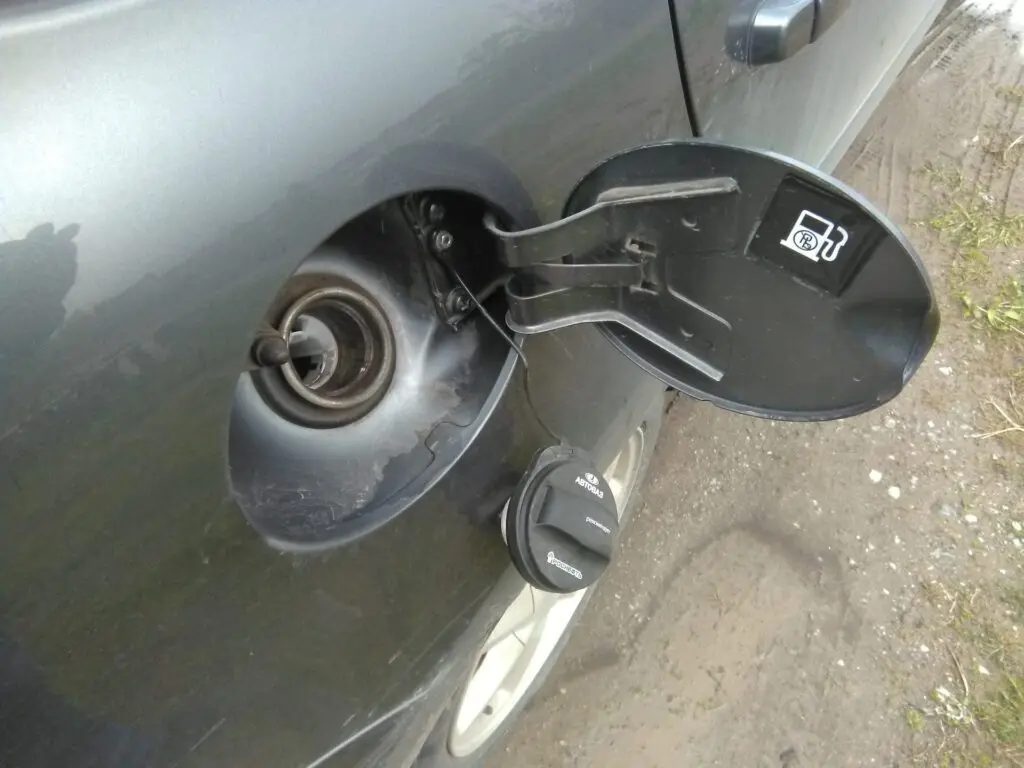
In order for the fuel to remain in the gas tank, and a large amount of gasoline vapors do not enter the atmosphere, an EVAP system, or an adsorber, is installed in the tank. Consider why it is needed in a car, if it was not in old cars. We will also discuss the principle of operation, how cleaning takes place and how to recognize system malfunctions.
What is an adsorber and EVAP system
Let's first understand the terminology. An adsorber, or EVAP system, is a kind of car separator that cleans the air leaving the gas tank from gasoline vapors. This device prevents direct contact of the air in the tank with the atmosphere. In its simplest form, it is a conventional charcoal filter, which is part of the gasoline vapor recovery system (EVAP).
This system is mandatory for any modern car. Some motorists mistakenly call it an absorber. Although the principle of these systems is similar, it is adsorbers that are used for cars. The reason lies in the intricacies of the process of cleaning the gases entering the system.
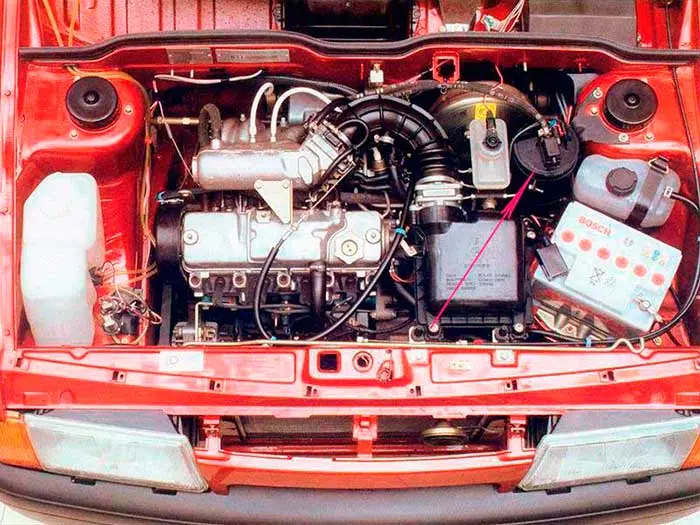
The absorber absorbs unpleasant odors contained in the stream by filtration through a liquid substance through which the gas to be purified is passed. Such a device is also equipped with a sump and a liquid purification system for the further operation of the system. The peculiarity of such an installation is that cleaning occurs due to the absorption of the flow by the entire volume of the filter. The complexity of the design and the entire purification process makes it impossible to use absorbers in cars. They are mainly used at production facilities, the work of which is associated with massive emissions of dirty air into the atmosphere.
The adsorber also removes pollutants from the air, only it does this on the basis of surface absorption. This means that the entire liquid component of gasoline vapor condenses on the surface of the separator and returns to the gas tank. The air is cleaned by feeding it into the intake manifold for removal in the cylinder along with the combustion air / fuel mixture. Basically, it is a small self-cleaning separator with a settling filter.
Components
The adsorber is a cylindrical or cubic plastic container filled with activated carbon. This substance is an excellent budget filter with the neutralization of fuel vapors.
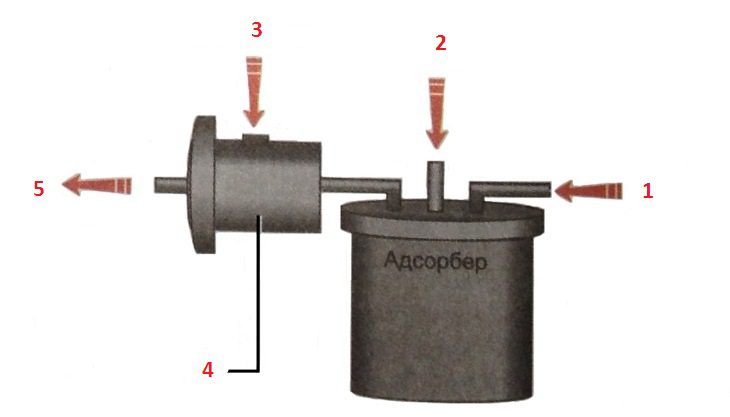
2 Air
3 Signal from the computer
4 Canister purge valve
5 Fuel vapors are directed to the intake manifold
The system itself consists of:
- Separator. It catches the particles of gasoline that condense in it and the fuel is returned to the gas tank;
- Gravity valves. In normal mode, this part is not involved. Rather, this valve is necessary when the car rolls over to prevent spilling gasoline from the tank;
- pressure sensor. This element controls the vapor pressure of gasoline in the gas tank, preventing it from deforming or affecting the operation of the fuel system. If the pressure is excessive, the valve discharges its excess;
- Filter media (most often it is coal). This part of the system cleans the passing stream from gasoline vapors;
- Tubes connecting the elements of the system and the fuel tank. Without them, neither the vapors will be removed nor the vapor condensate will return to the fuel tank;
- solenoid valve. It is set to switch the operating modes of the system.
Why do you need an adsorber?
The first development of an automobile adsorber appeared as an additional system that increased the environmental friendliness of the car. Thanks to this device and the modernization of the power unit, the car could comply with the Euro2 eco-standard. By itself, this system is not needed for better motor performance. If configured correctly petrol injection, expose ignition and equip the car catalyst, then the vehicle will comply with more stringent environmental standards.
This system was not used in carburetor engines. For this reason, there is a constant smell of gasoline near the old car. If the transport is stored on the street, then it is hardly noticeable. But it is already impossible to stay in the garage next to such a car for a long time without signs of poisoning with gasoline vapors.
With the advent of injection internal combustion engines, an adsorber is an integral part of any car. The fact is that it is not only the removal of exhaust gases through the exhaust pipe that pollutes the environment. Gasoline vapors also get into the air, and even the highest quality engine with a modern exhaust gas cleaning system without this system for cleaning the vapors generated in the gas tank will not meet the high requirements of environmental protocols.

On the one hand, it would be possible to close the gas tank hermetically, and the problem is solved - the fumes do not enter the environment. However, this would not mean that gasoline will stop evaporating. As a result, pressure will rise in the sealed tank (especially during the hot season). This process is undesirable for the fuel system. For this reason, there must be ventilation in the tank.
It turns out a vicious circle: the tank cannot be closed tightly so that the gasoline vapor does not increase the pressure in it, but if ventilation is provided in it, the same vapors inevitably enter the atmosphere. The purpose of the adsorber is precisely to maintain the pressure in the tank at atmospheric level, but at the same time the environment is not polluted by harmful vapors.
In addition to environmental concerns, automakers have improved the safety of the cars themselves. The fact is that when the car is stored in the garage, without an adsorber, the air near it will be saturated with toxic fumes. Inevitably, this air also enters the vehicle interior. Even with the windows open while driving, it will take time for these volatiles to dissipate. Because of this, the driver, as well as all passengers, partially inhale the polluted air and poison themselves.
Where is the adsorber
Logically, since the adsorber prevents direct contact of gasoline vapors from the tank with clean air, then it should be either in the gas tank itself or near it. In fact, the automaker decides for itself where to install the key element of the system in the car. So, domestic car models (Lada) are equipped with an adsorber, which in almost all versions is under the hood near the right headlight.
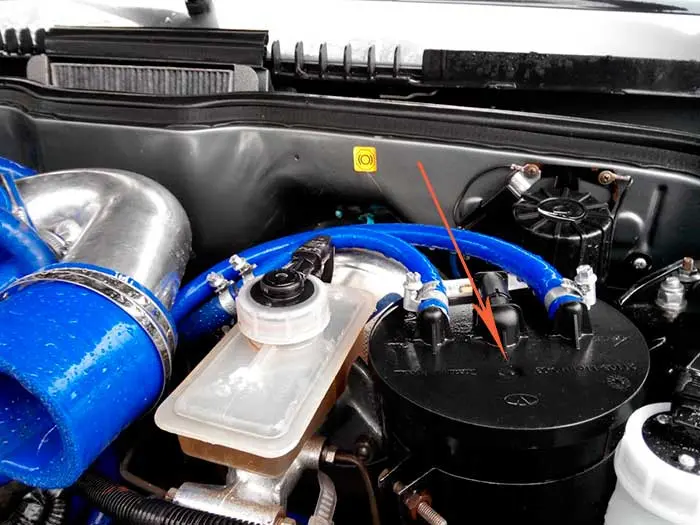
In other brands, this element can stand in a niche along with a spare wheel, on the fuel tank itself, under wheel arch liners, etc. Take Audi A4 and B5, for example. In them, depending on the year of manufacture, the adsorber was installed in absolutely different departments of the car. In the Chevrolet Lacetti, it is generally under the trunk near the right rear wheel. To clarify where in a particular case this element is located, it is necessary to refer to the vehicle operating manual.
The principle of operation of an adsorber in a car: the EVAP system
Despite the structural differences and the difference in the location of key elements, the air purification scheme from volatile fuel substances in all machines will work according to the same principle. The key element that cleans the air from unpleasant evaporation is a container filled with activated carbon.
Gasoline vapors after condensation through the gravity valve enter the tank cavity through a hose. While the car's engine is not running, the pressure in the tank rises, and vapors accumulate in a special reservoir in the adsorber tank. Gradually, the excess pressure pushes the excess air through the coal and escapes into the atmosphere. At the same time, the gasoline smell and harmful volatile substances are retained by the neutralizing agent.
There is one more valve in the adsorber device, but it is already electromagnetic. When the internal combustion engine starts, a microprocessor (electronic control unit) controls the operation of this mechanism. The second circuit of the adsorber is connected to the intake manifold through a union connected to the same fuel tank.
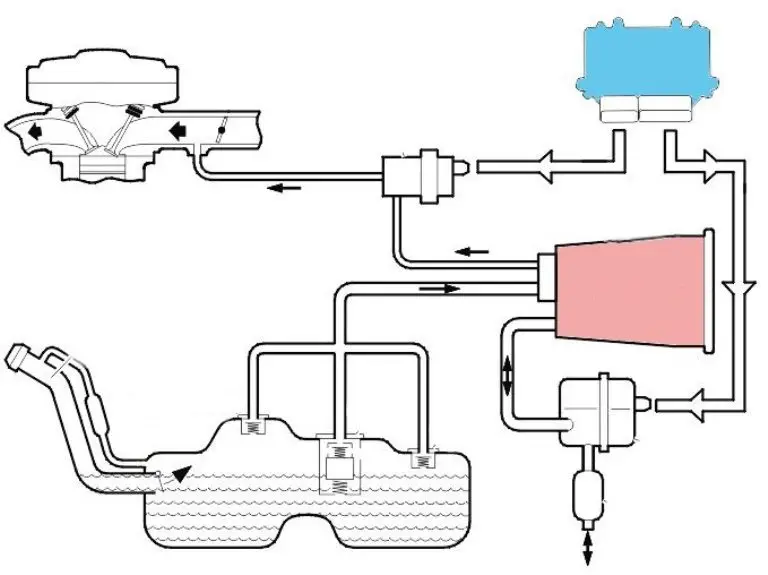
When the pressure in the tank rises, the solenoid valve is triggered. Since a vacuum is created in the intake manifold, gasoline vapors are sucked in, but in this case they no longer go through the carbon filter into the atmosphere, but along an easier path - into the intake system (for more details on how it works, it is described separately).
To prevent the formation of a vacuum in the gas tank due to the operation of the cleaning system, which would complicate the operation of the gas pump, there is an air connection in the adsorber tank. Through it, a fresh air stream enters the separator if all excess vapors have already been removed. This process is called purging.
The advantage of such a system is that while the motor is running, the carbon filter remains unused. When gasoline vapors enter a car's intake system, harmful substances are burned during the operation of the cylinders. The exhaust gas stream is then neutralized in the catalyst. Thanks to this, the smell of unburned gasoline is not heard near the car.
What does the adsorber valve affect?
Most system malfunctions are related to the solenoid valve. The principle of operation of the device is simple. Depending on whether the motor is running or not, the valve will be open or closed.
With a working solenoid valve, the system works properly, and many drivers are not even aware of its existence. But as soon as its performance is disturbed, the system is not purged, and a large amount of gasoline vapor accumulates in the tank. In this case, the fuel system of the car can be seriously damaged.
Adsorber device
The design of the adsorber includes the following elements:
- A plastic container made in the shape of a cylinder. It performs the function of a body and a cavity in which gasoline vapors are neutralized;
- Activated carbon is a cheap and at the same time effective neutralizer of volatile hydrocarbon substances that make up the fuel. It provides for the trapping and purification of air with harmful substances, but in more expensive systems, other substances are used, up to natural minerals;
- A sensor or a relief valve that responds to the pressure of vapors in the gas tank and ensures the removal of their excess if the adsorber is clogged;
- The fuel tank is connected to the adsorber, which in turn is connected to the intake manifold using pipes. Each tube is made of materials that do not degrade when in contact with gasoline - mainly a fuel hose;
- Gravity and solenoid valves;
- Separator on the surface of which gasoline is condensed. The liquid is returned back to the tank.
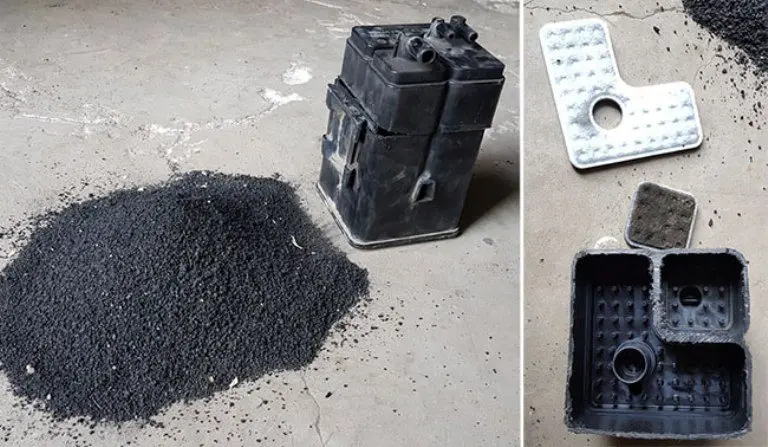
If the vehicle is involved in an accident and rolls over, the gravity valve prevents fuel from escaping through the filler neck. This is the only purpose of this element.
Classification of adsorbers
When the internal combustion engine received an injector and a catalyst, the powertrain became more environmentally friendly, but environmental companies are constantly raising the permissible level, so both engines and their systems are constantly being improved. And the EVAP system is no exception. To date, there are already several modifications of these devices.
Since their performance will not be affected by either the location of the adsorber or the length of the line, they differ from each other only by the filter material. The flask may contain:
- Stationary granular adsorbent;
- Movable granular adsorbent;
- Fine-grained adsorbent, which constantly boils from below.
Most car manufacturers use the first modification. This is the easiest way to implement the removal of fuel vapors. The second and third options also effectively neutralize harmful substances, but in both cases, part of the adsorbent can be removed from the container along with air into the environment. For this reason, in addition to changing lubricants and filters, the scheduled maintenance of the vehicle also includes checking the level of the active substance. For this, the flask is removed, and, if necessary, an adsorbent is added.
Gravity Adsorber Valve
This is a mandatory element for the adsorber system. In addition to preventing gasoline from spilling onto the road if the car rolls over, this element also prevents gasoline from entering the filter element.
In each model, the auto gravity valve is installed in different places in the fuel tank. For example, in the Chevrolet Niva it stands near the filler neck of the tank, and in the Chevrolet Lacetti it is located directly in the tank itself.
Adsorber valve
The key element of the gasoline vapor neutralization system is the solenoid valve. It switches between vapor recovery and sump purge. Let's take a closer look at how it works, what is the symptom of its malfunction, and also how to replace it in the event of a breakdown.
What does the adsorber valve affect?
When the engine is turned off, the valve is in a closed state, therefore, if there is an excess of pressure in the fuel tank, the vapors are forced through the carbon filter into the atmosphere. As soon as the internal combustion engine starts, an electromagnet is triggered by an electrical signal from the ECU, and opens the valve to ensure ventilation of the cavity.
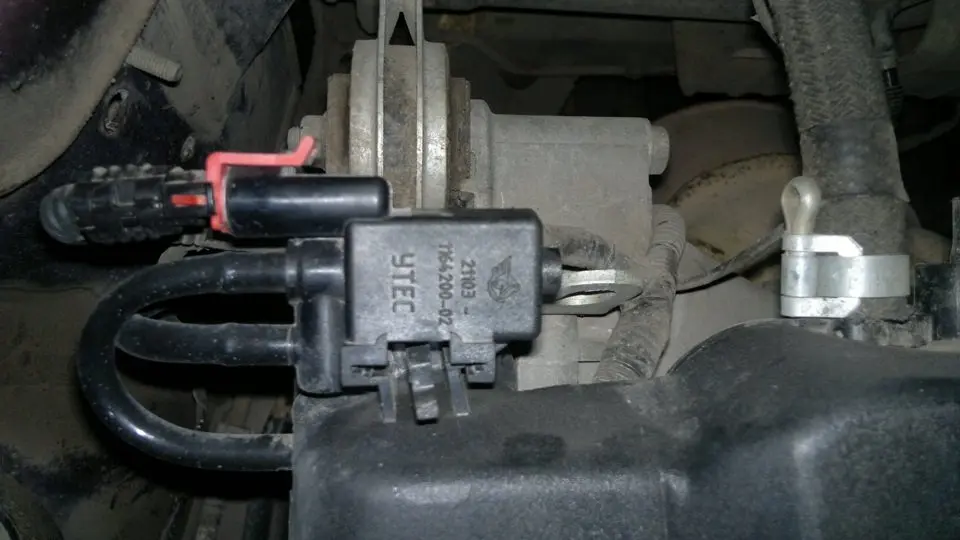
A serviceable canister valve makes the overall fuel system safer. Excessive pressure of gasoline is not created in the line, and when the power unit is operating, excessive fuel consumption is not observed. If the pipes of the line are poorly clamped or have already cracked from old age, then the presence of a working valve of the adsorber will prevent fuel leakage, because the pressure does not rise in the system.
How the adsorber valve works
It is believed that this element opens automatically with the start of the power unit. In fact, this is not the case. It is triggered when overpressure appears in the fuel tank. The electromagnet is controlled in accordance with the algorithms embedded in the microprocessor of the control unit.
Depending on the car model, the ECU records the indicators mass flow sensor, air temperature, in some cases and pressure in the tank. In accordance with all these signals, the electronics determines the need to ventilate the adsorber.
If you delve into the valve operation scheme in more detail, then it more regulates the degree of adsorber purging and suction of gasoline vapors. It depends on how much air is consumed in the intake manifold. In fact, the control unit sends pulses that affect the duration and intensity of the purge.
How to check the adsorber valve
Adsorber valve malfunctions include:
- Failure of an electric magnet (mainly a winding break);
- Valve stuck open;
- Wedge valve closed;
- Lack of control impulses.
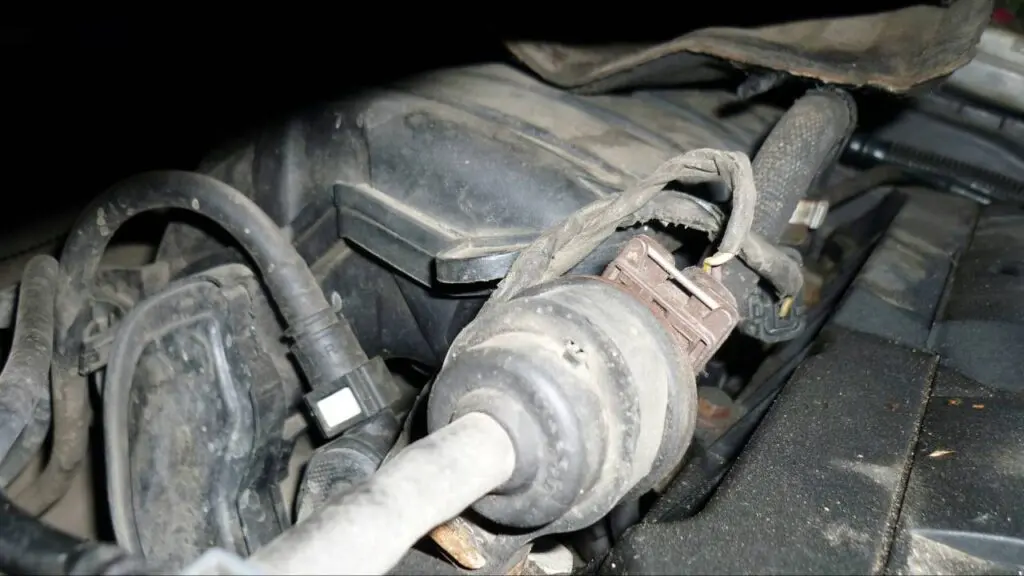
To carry out an independent diagnosis, you first need to "ring" the wiring with a multimeter. Also, the malfunction can be found using the diagnostic program. For a particular car, there may be its own software. The diagnostic computer is connected to the machine through the service connector, and a search for breakdowns is performed.
In the process of supplying control signals, the valve should click (according to the principle of clicks in the starter, since a similar electromagnetic mechanism is used there, only with large dimensions). This is how the electrical component of the circuit is checked.
To make sure that the valve itself is not stuck, it must be removed. This is easily done as it is simply inserted into the working cavity. Two hoses and two wires fit to it. They are also easy to unfasten, only before that you need to remember what is connected where.
As mentioned earlier, the valve is closed by default. As soon as electricity is supplied to the winding, the magnet is triggered and it opens. At the same time, a characteristic click is heard. To check if this element is closed without supplying current, you can disconnect it from the line. On the one hand, its fitting (thick) is lowered into a small container with water, and on the other, a tube with a syringe is put on the fitting (thin). If, when you press the plunger of the syringe, no air bubbles appear in the water, then the valve is working.
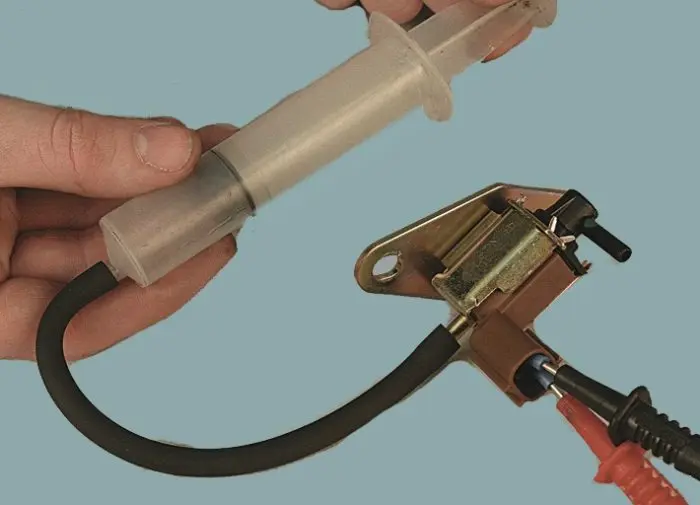
An identical procedure is carried out when detecting the operability of the solenoid valve. For this, wires are connected to its contacts. The design remains the same. We connect the wires to the battery and press on the syringe plunger. If, when the current was applied, a click sounded and bubbles appeared in the water tank, then the device is completely functional.
Symptoms of a malfunctioning adsorber
Since the operation of the adsorber is associated with the fuel system, its malfunctions also affect the functioning of the gasoline supply to the cylinders. The first symptom that may indicate a breakdown of the gasoline vapor neutralization system is the pops coming from the fuel tank.
An efficient solenoid valve will emit slight clicks that are audible only when the engine is idling. But if it does not work correctly, these sounds can either completely disappear, or vice versa - be too loud. In the second case, adjustment with a special bolt can help. It is worth mentioning here that such sounds can be heard from the gas distribution mechanism. To make sure that the problem is in the valve, a sharp press on the gas pedal will help. In the event of a problem with the timing belt at this point, the sounds will change.
A hiss may be heard when the filler plug is unscrewed. This is due to the fact that a large amount of vapors has accumulated in the tank, but they have not been removed through the charcoal filter.
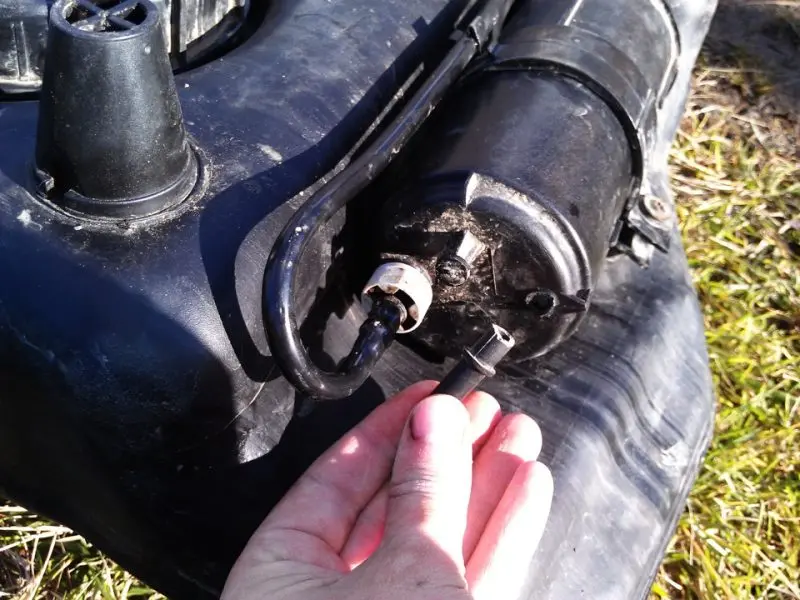
On the technical side, a malfunction of the EVAP system is manifested by floating speed of the power unit during its warming up. Of course, this symptom is the result of other malfunctions, for example, errors in the control unit, in the ignition system, etc. Another indirect sign of a failed EVAP is increased fuel consumption, speed dips in dynamic mode. Often, the gasoline level sensor gives incorrect readings - on the dashboard, the level can be displayed low, and after a moment - high and vice versa.
Sometimes problems with the adsorber affect the performance of the fuel pump, and it fails. A failed solenoid valve winding is manifested by the fact that this element stops knocking, that is, the line for purging the system does not open.
And the most obvious sign of problems with the adsorber is the persistent smell of fresh gasoline near the car or in the cabin. Of course, this can also happen for other reasons, for example, leakage of fuel lines.
In modern cars, on-board electronics diagnostics allows you to find out exactly whether the problem is with a malfunction of the fuel vapor neutralization system or not.
How to identify malfunctions of the adsorber valve
Adsorber malfunctions are often associated with the failure of the solenoid valve, as this is the most sensitive part in the system. To understand that there are problems with the valve, the following signs will help:
- The engine idle warms up for 5 to 10 minutes. After this time, the idle starts to float.
- At the same idle, the gas pedal is pressed. Instead of increasing the speed, the engine starts to stall, as if it does not have enough fuel.
- Feels like the dynamics of the car have decreased.
- The fuel level sensor with the same amount of gasoline shows the level in different ways.
- The gluttony of the motor has increased (more related to the need to press the gas pedal harder, because the dynamism of the car has decreased).
- When the engine starts, a knock is heard, like valves knocking.
If these “symptoms” appear, but you need to take the car for diagnostics or check the valve’s performance yourself.
Do-it-yourself adsorber cleaning, checking the adsorber valve and adjusting it
If, during the system check, a valve breakage was detected, it must be replaced with a new one. As for the carbon filter, it can be cleaned instead of buying a new one, although modern business insists that such substances are not cleaned, but only changed to fresh ones due to the loss of their properties.
Of course, no one will argue that it is better to purchase a fresh adsorber. But if the motorist does not have the opportunity to do this yet, he can try to clean it himself. The procedure is performed as follows.
The plastic flask is dismantled from the car and carefully disassembled (so as not to spill the powder). The adsorbent is cleaned by firing it in the oven. It is not recommended to do this in the house, as gasoline particles are retained in the powder. During heat treatment, a pungent odor will appear, which can be absorbed into the upholstered furniture in the kitchen. The charcoal will smoke during this procedure.
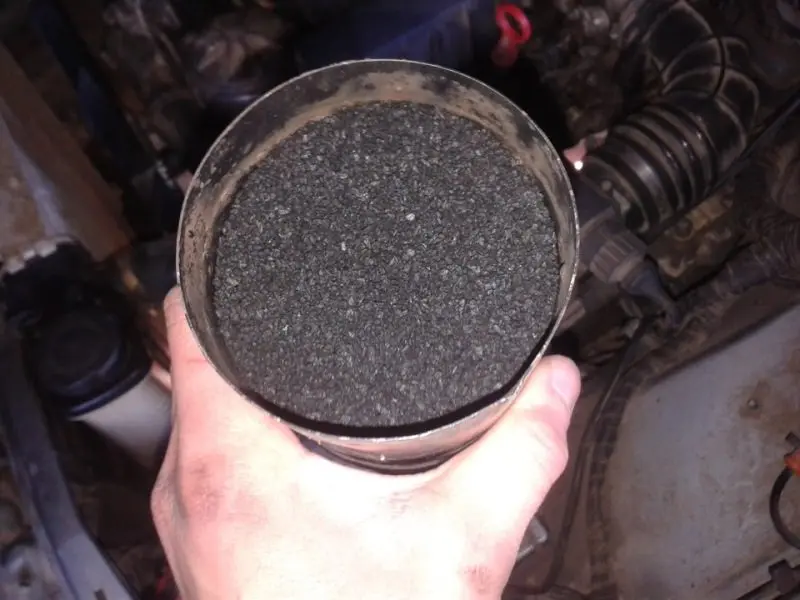
Initially, the powder is slowly heated to a temperature of 100 grams. The powder should be left at this temperature for about 60 minutes. After that, heat treatment is carried out at 300 degrees. In this mode, the powder continues to stand until the unpleasant odor disappears. In the process of such processing, the powder must be mixed. At the end of the procedure, the adsorbent is left in the oven to cool.
Before pouring the “roasted” powder into the flask, the filter sponges and seals must be cleaned. If necessary, these elements can be made from the appropriate materials.
Is it possible to remove
First of all, as we have already figured out, the adsorber in the car is needed so that the vehicle meets environmental standards. But for some car owners, this parameter is not so important, so they consider this system useless in the car. The reason for the removal of the adsorber valve, many call the deterioration of the engine and an increase in its voracity.
But the presence of a working system in a car does not in the least impair the performance of the power unit, and gasoline consumption does not increase because of it, because it cleans the vapors, returning fuel particles back to the tank. Of course, the adsorber will not add significant savings, but the voracity of the motor does not exactly increase because of it.
If you remove the system, the motor will not break. In some cases (when the filter medium needs to be replaced), the removal of the adsorber even leads to more stable idling of the engine. This procedure is carried out as follows. The adsorber can is removed. Instead, a fine fuel filter from a carburetor internal combustion engine is installed. The tube to which the valve is attached is blocked. Reconfigure the control unit (about how chip tuning goes, in detail described separately) so that the engine error warning does not light up on the tidy.
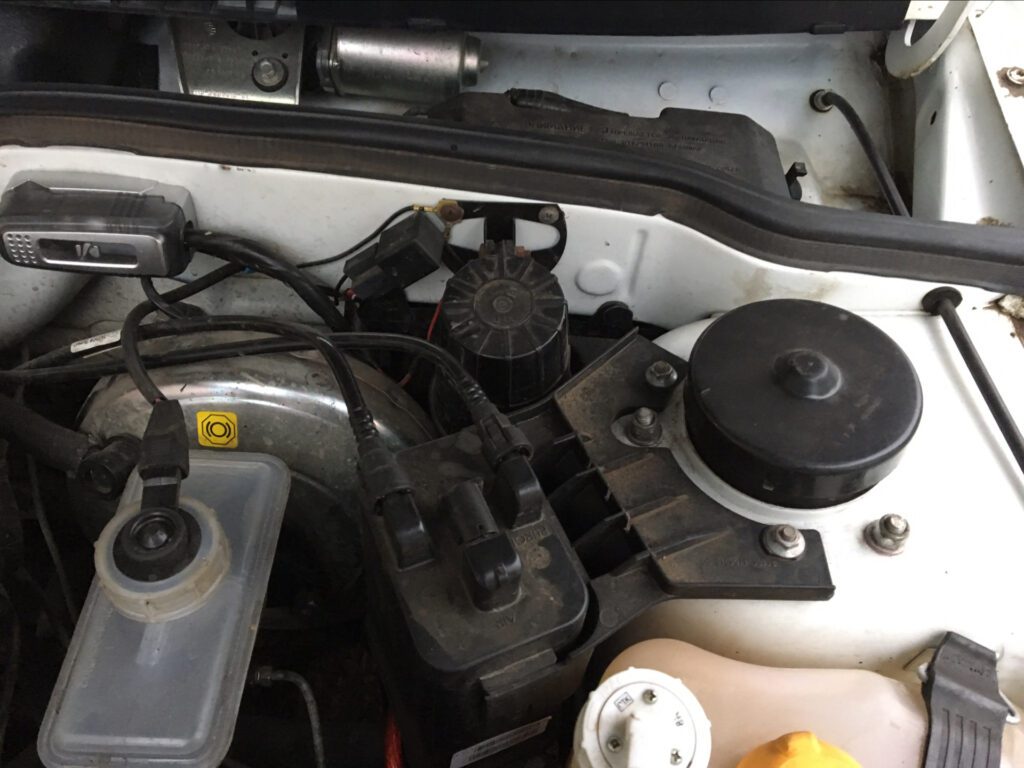
The disadvantages of such a “modernization” of a car are:
- The smell of gasoline in the car;
- Light hydrocarbons do not remain in the filter element, but go directly to the atmosphere;
- In some cases, the smell of gasoline will be heard in the garage after a long idle time of the car.
The advantages of deletion are:
- Additional space in the engine compartment. It can, for example, be used to set preheaterif the machine is operated in northern latitudes;
- The motor will run more stably at idle (the problem with floating speed XX may be due to a clogged filter or a poorly functioning valve);
- There is no need to spend money to buy a new solenoid valve or filter.
Of course, whether or not to remove the adsorber from your car is the decision of each car owner. Everyone decides for himself what to compromise. But in some cars, the absence of this system leads to the fact that the cabin smells strongly of gasoline, and on long trips this can adversely affect the well-being of everyone in the car.
The consequences of dismantling the adsorber
Some motorists are sure that increasing the environmental parameters of a car always negatively affects the efficiency of the power unit and the dynamics of transport. For this reason, they remove everything that, as they think, "interferes" with the operation of the unit. In fact, the adsorber does not affect the performance of the internal combustion engine, but its absence - yes, since the design of the fuel system provides for its presence, and it must ventilate the tank through this device.
Those who argue that this neutralization system somehow affects gasoline consumption in the direction of reducing this parameter, may also be delusional. This is so, because only a small amount of gasoline is returned to the tank, which simply evaporates into the atmosphere in an ordinary car. However, these savings are so small that they cannot be felt during vehicle operation.
As for the environmental friendliness of the machine, then in this case this parameter is reflected only in the diagnostic equipment. Compared to the catalyst or the same AdBlue system described separately, the EVAP function is not so tangible.
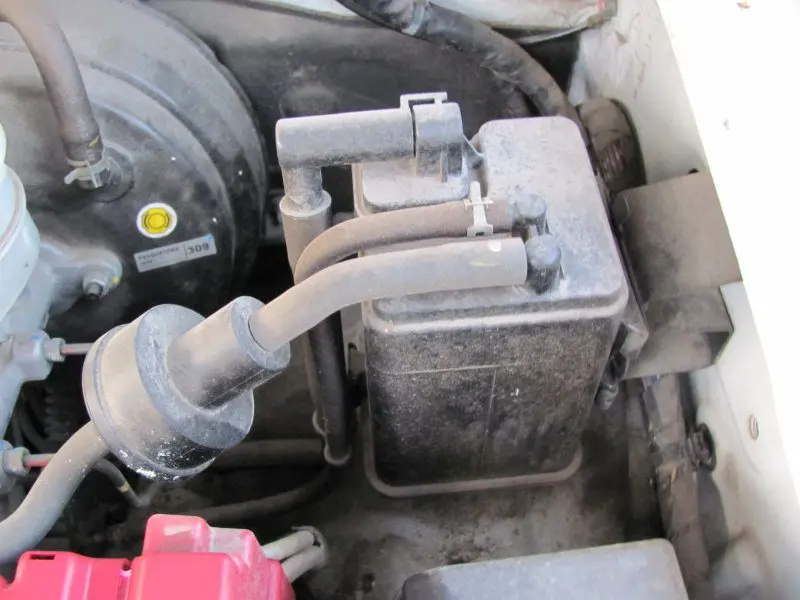
If during the diagnostics it was revealed that the problems are related to the EVAP system, you cannot remove the adsorber and connect the pipes coming from the gas tank and intake manifold directly without a filter. More precisely, it is physically possible, however, without a filter element and valve, in the process of constant suction of part of the air from the tank, it can damage the fuel tank, and in some cases, gasoline vapors with fuel particles get into the intake manifold.
In the second case, the electronic control unit will not be able to form high-quality VTS, and the motor will receive an over-enriched mixture. This will definitely lead to the fact that the exhaust gases will contain a large amount of harmful substances. Such a disruption to the operation of the power unit increases the load on the catalyst, and this is a very expensive part in the car.
If the motorist decides to remove the system as unnecessary and useless, and muffle the pipes, then in this case he cannot avoid difficulties with the operation of the car. A large amount of vapors will accumulate in the tank, which will lead to unstable operation of the internal combustion engine due to the high pressure of gasoline in the tank.
For these reasons, if the adsorber is out of order, either cleaning or replacing it with a new one will help (it all depends on the type of malfunction).
We put a new adsorber valve
If the diagnostics of the performance of the EVAP system must be performed by a specialist who understands graphical reports and the required indicators, then replacing the adsorber valve is very simple. A new part needs to be selected not only for visual similarity. There is a marking on the body of the device - it is by these symbols that you need to select a new mechanism.
Replacement is done as follows. First you need to find where the valve is installed. The negative terminal is removed from the battery. This is necessary so that the on-board system does not register an error, which will then need to be reset, since in this case the ECU will go into emergency mode.
Next, the connector block with wires is disconnected. It usually has a latch to prevent accidental disconnection of the wiring. The adsorber tubes are removed, the valve mount is unscrewed, if any. The connection of a new part is carried out in the reverse order.
In addition, we offer a short video on how the adsorber works and how to check it:
Related videos
Here is a detailed video on how to check the canister valve yourself:


Watch this video on YouTube
Questions and answers:
How does the adsorber malfunction manifest? At idle speed dips are felt, the valve does not work when the engine is running. When opening the lid of the tank, a hiss is heard (a vacuum is formed in the tank).
What is the adsorber used for? First of all, this system prevents the release of gasoline vapors into the atmosphere from the gas tank. When vapors are formed, it filters them from the fuel particles.
When does the canister valve open? The adsorber valve is controlled by the electronic control unit. During purging, air with condensate is directed to the afterburner cylinders.
